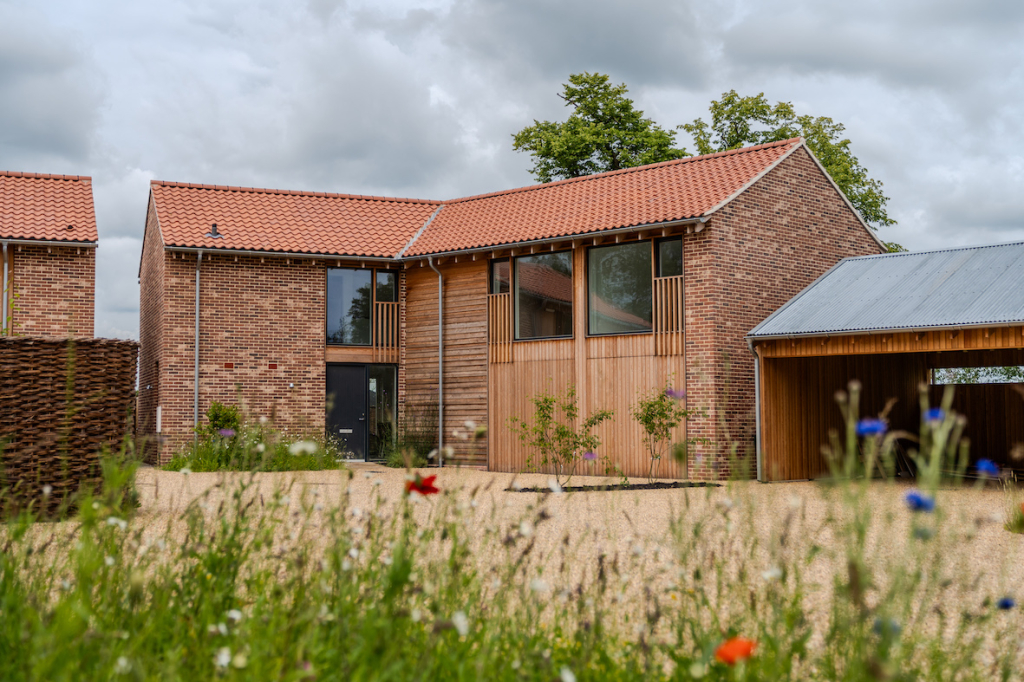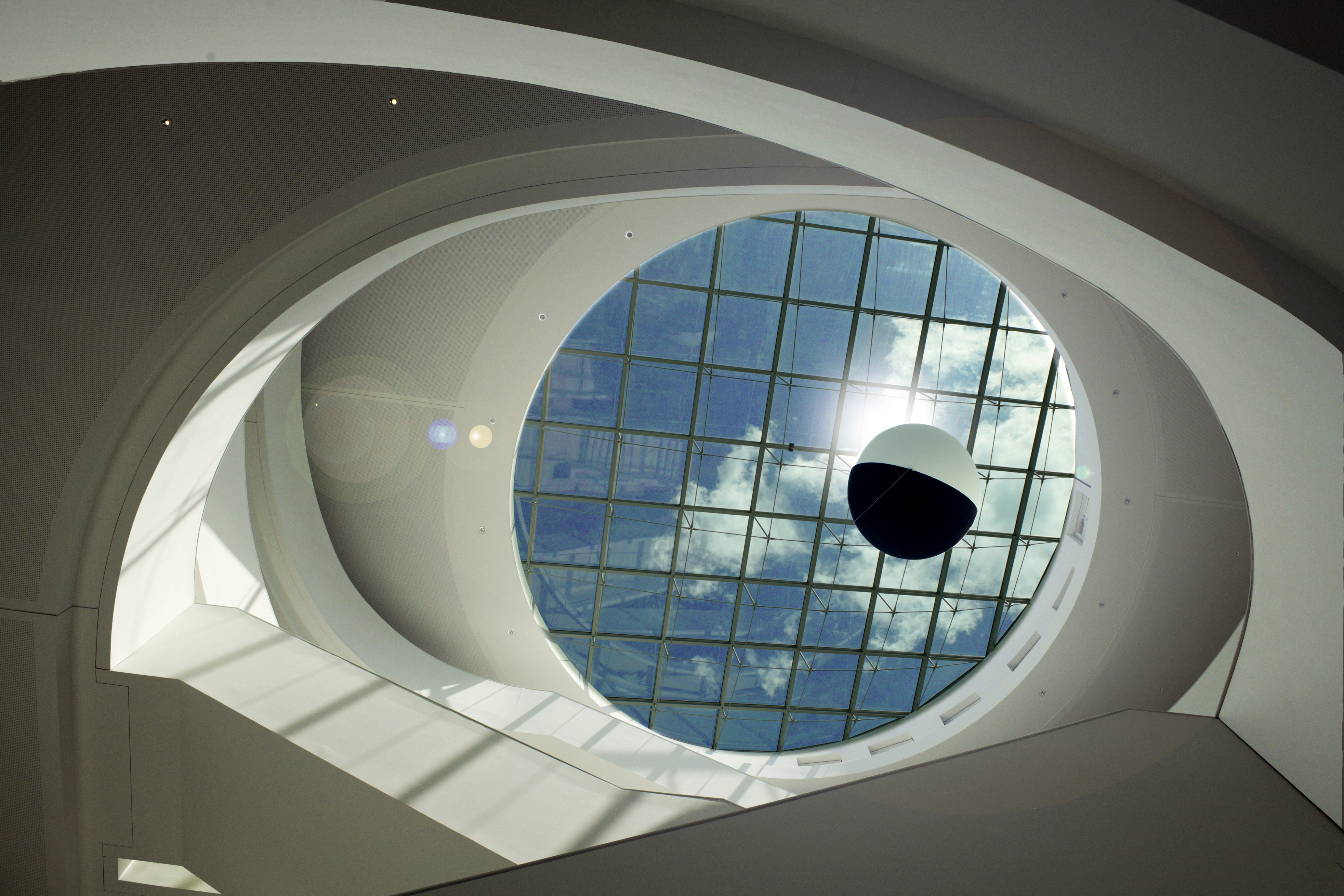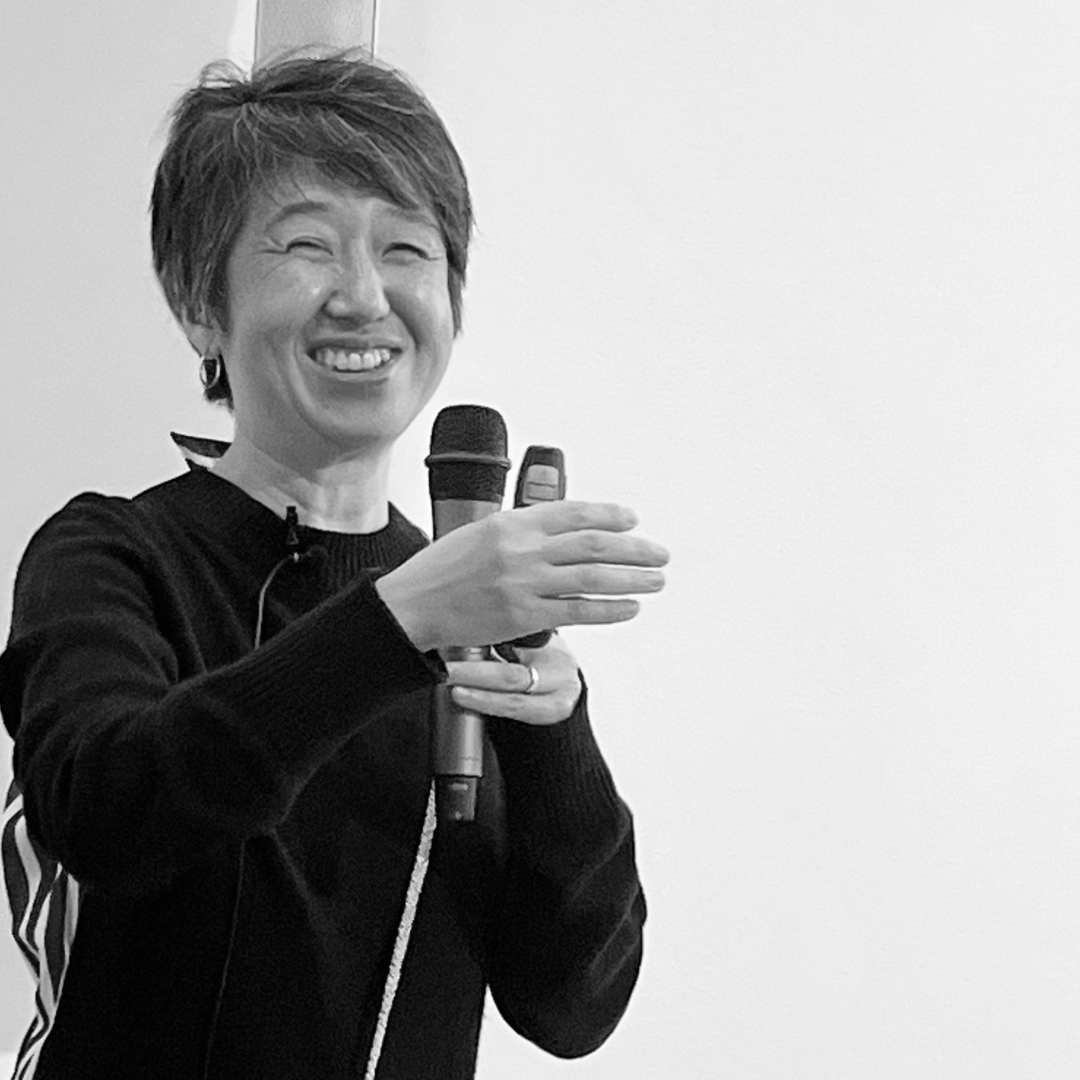Art and the power of daylight

Date
22 Mar 2023
Share
Copy
(Cover image: CIRCADIAN DREAMS, HELGA SCHMID, 2022. PHOTO: FRANCISCO IBANEZ)
Opening on 24 March, the new exhibition of EPFL Pavilions Lighten Up! On Biology and Time uses the lens of art to explore the connection of living organisms with the natural cycle of light and dark, showcasing the works of renowned artists and architects such as Olafur Eliasson, James Carpenter, Liliane Lijn or Colin Fournier. Nineteen installations transform daily, lunar or seasonal rhythms into light- and soundscapes, immersive spaces or virtual experiences. They highlight the urgency of reconnecting to the outdoor environment and remind us of that regular light exposure is necessary for health.
All living organisms have internalised the alternation between day and night and changing daylength with seasons in the form of circadian rhythms that optimally prepare the body for the right behaviour at the right time. Being exposed to enough bright light at the appropriate time of day can significantly boost our immune system, ensure sleep quality, daytime alertness and mood, and determine our overall well-being.
Through a striking variety of forms and experiences, Lighten Up! employs art to explore our connection to light and the crucial role of circadian rhythms. These artworks celebrate the power and beauty of daylight, introduce us to the secrets of biological clocks, offer alternative representations of time, or probe the mysteries of sleep and dreams.

Essence of Light
Three installations lead the visitors to reflect on the very nature of light. Throughout the day, the mesmerising optical devices of Embodied Light by American artist James Carpenter, allow us to interact with and immerse ourselves into the changing qualities of the luminous environment. By beaming sunlight into a dark room, Your circadian embrace by Icelandic-Danish artist Olafur Eliasson uses the dynamics of the sun’s path to make the observer’s unique position on earth explicit as the planet revolves. Looking back on light influencing evolution, Swiss artist Alan Bogana has materialised rays of light to investigate the earliest evidence of vision in Light-Oriented Ontologies — The Beginnings, an artwork he developed at EPFL as Artist-in-Residence.
Daylight Dynamics
The dynamics of daylight, their place and role in our lives and the spaces that we inhabit are at the heart of three installations. Circa Diem, developed by a team of students, designers, enginneers and scientists from EPFL and HEAD–Genève and led by EPFL Professor and Lighten Up! curator Marilyne Andersen, is a striking immersive installation that highlights the impact of the built environment on our exposure to daylight to reflect on the relationships between urban lifestyles and light hygiene. The virtual Circadian House by French-British architect Colin Fournier, introduces the public to the concept of a small house lit entirely by natural light and to the daily lives of its two inhabitants. Habitat, by Siegrun Appelt and Constanze Müller, makes use of children’s voices to address adults on the topics of climate protection, sustainability, chronobiology, health and daylight.

Biological Clocks
Five installations allow visitors to fathom the complexity of biological clocks, the subtle mechanisms that optimise our behaviour and those of all living organisms in their day-night environment. 10,000 Waking Bees by New Zealand artist Anne Noble delves into the time sense of bees whose internal clocks are stopped by anaesthesia, thus disturbing their navigation back to the hive upon awakening. Circadian Bloom by British artist Anna Ridler uses the predictable
bloom times of different flowers to arrange a digital clock to tell time. The two installations by Swiss artist Robin Meier Wiratunga, Synchronicity (16mm) and Synchronicity, rhythm the bioluminescent signals of thousands of fireflies with external light signals. The interactive installation The Clocks Around and Within Us delves into the history and discoveries of chronobiology, the science that unites all the artworks of the exhibition. Its content was developed
by Emeritus Professor and Lighten Up! curator Anna Wirz-Justice together with a large team of contributors.
Nature of Time
Two installations question our very relationship to time and advocate a realignment of our temporal sensibility. Circa Solar, by British designer Ted Hunt, is a digital watch with app that frees time from traditional forms to represent it as the changing daylength across the year as light and dark, with transitions at dawn and dusk. Circadian Dreams by German artist Helga Schmid is an immersive installation that simulates an alternative time system based on the different circadian behavioural phases of the human body.
Rest-Activity Cycles
All organisms manifest circadian rhythms, and the most obvious one in humans is the sleep-wake or rest-activity cycle. While Circadian Rhythms by French artist Kirell Benzi visualises the activity-rest data of three people with different occupations to reveal their distinctive daily patterns, two other installations follow individual rest-activity cycles and light exposure over many years. The SunDial: NightWatch series by British artist Susan Morris is made of three Jacquard tapestries whose length and patterns illustrate and are determined by the artist’s sleep-wake and light exposure patterns over a period of five years, beautifully showing seasonal changes in daylength even though living in an urban environment. Cyclus and Panorama, by the late German artist Andreas Horlitz were two monumental installations that are partially reproduced within the exhibition space of Lighten Up! The first consisted, in its original form, of seven years of rest-activity data engraved onto a 24.5 m-high column illuminated from within, while the second featured twenty-eight light boxes, each with an etched silver-mirror rest-activity cycle of individuals covering the human life span from birth to old age.

Mysteries of Sleep and Dreams
Finally, two installations delve into the invisible and unconscious nature of sleep and dreams. American artist Liliane Lijn probes her own dreams and uses them as a primary resource in her triptych sculptural installation Sweet Solar Dreams. Swiss artist Rafael Gil Cordeiro extracts data from wearables measuring sleep physiology, and translates them into the 3D printed sculptures of print my sleep, in which the uniqueness of an individual’s sleep pattern determines the ultimate shape of each object.
The exhibition was curated by Prof. em. Anna Wirz-Justice (Centre for Chronobiology, Psychiatric Hospital of the University of Basel), Prof. Marilyne Andersen (Director of EPFL’s Laboratory of Integrated Performance in Design, LIPID), Prof. Sarah Kenderdine (Director and lead-curator of EPFL Pavilions, and director of EPFL’s Laboratory for Experimental Museology, eM+) and Dr. Giulia Bini (Curator and head of EPFL-CDH AiR Program “Enter the Hyper-Scientific”), and produced by EPFL Pavilions.
Lighten Up! On Biology and Time
23.3.–30.7.2023
EPFL Pavilions, Lausanne
epfl-pavilions.ch
Place Cosandey, EPFL Campus
1015 Lausanne
Tuesday–Sunday, 11 am–6 pm
Free Entry
Artists:
Marilyne Andersen et al. | Siegrun Appelt with Constanze Müller |
Kirell Benzi | Alan Bogana | James Carpenter | Rafael Gil Cordeiro |
Olafur Eliasson | Colin Fournier | Andreas Horlitz | Ted Hunt | Liliane
Lijn | Robin Meier Wiratunga with André Gwerder and Guy Amichay |
Susan Morris | Anne Noble with Guy Warman | Anna Ridler | Helga
Schmid | Anna Wirz-Justice et al.
Partners:
Velux Stiftung | Swiss National Science Foundation |
Loterie Romande | EPFL WISH Foundation




